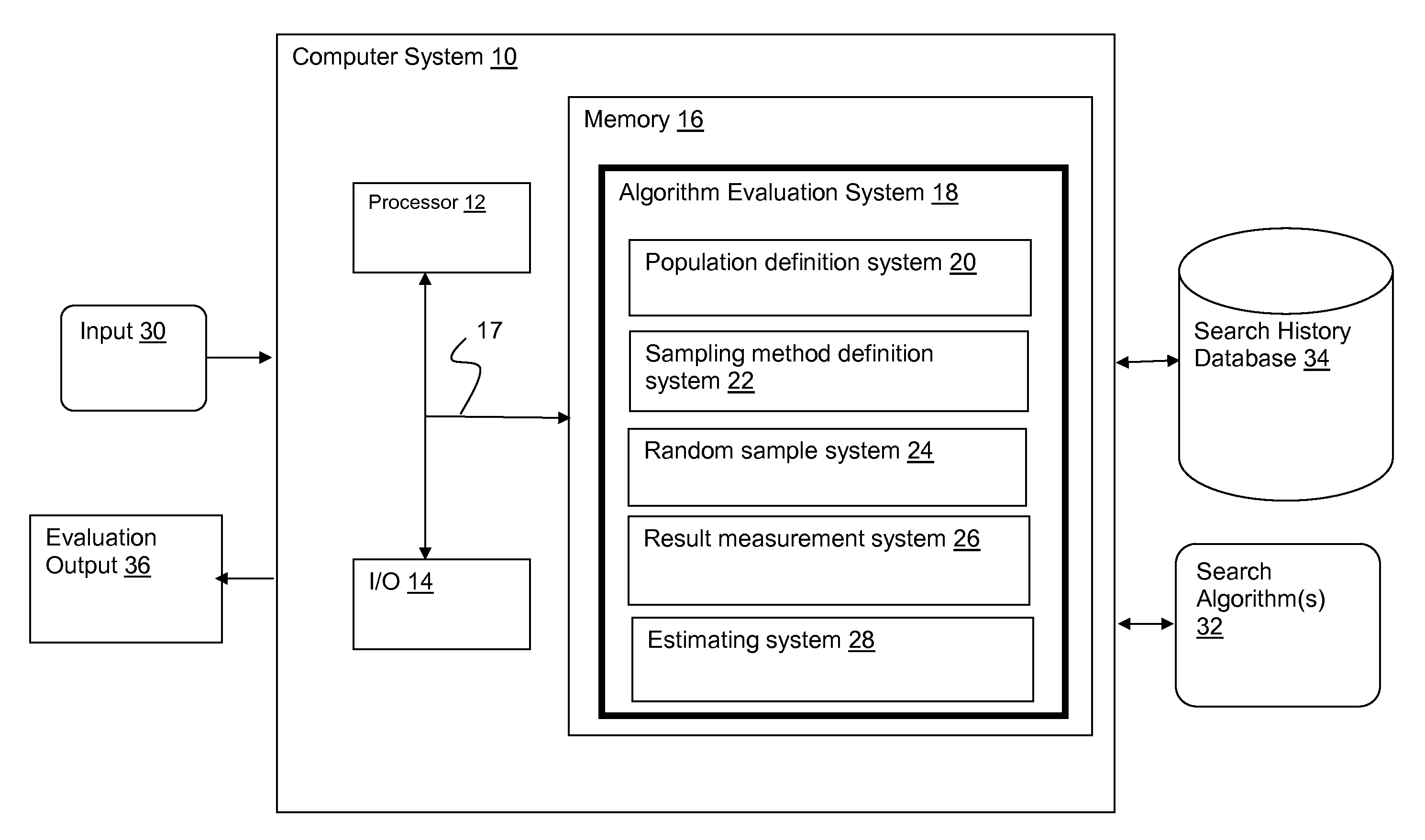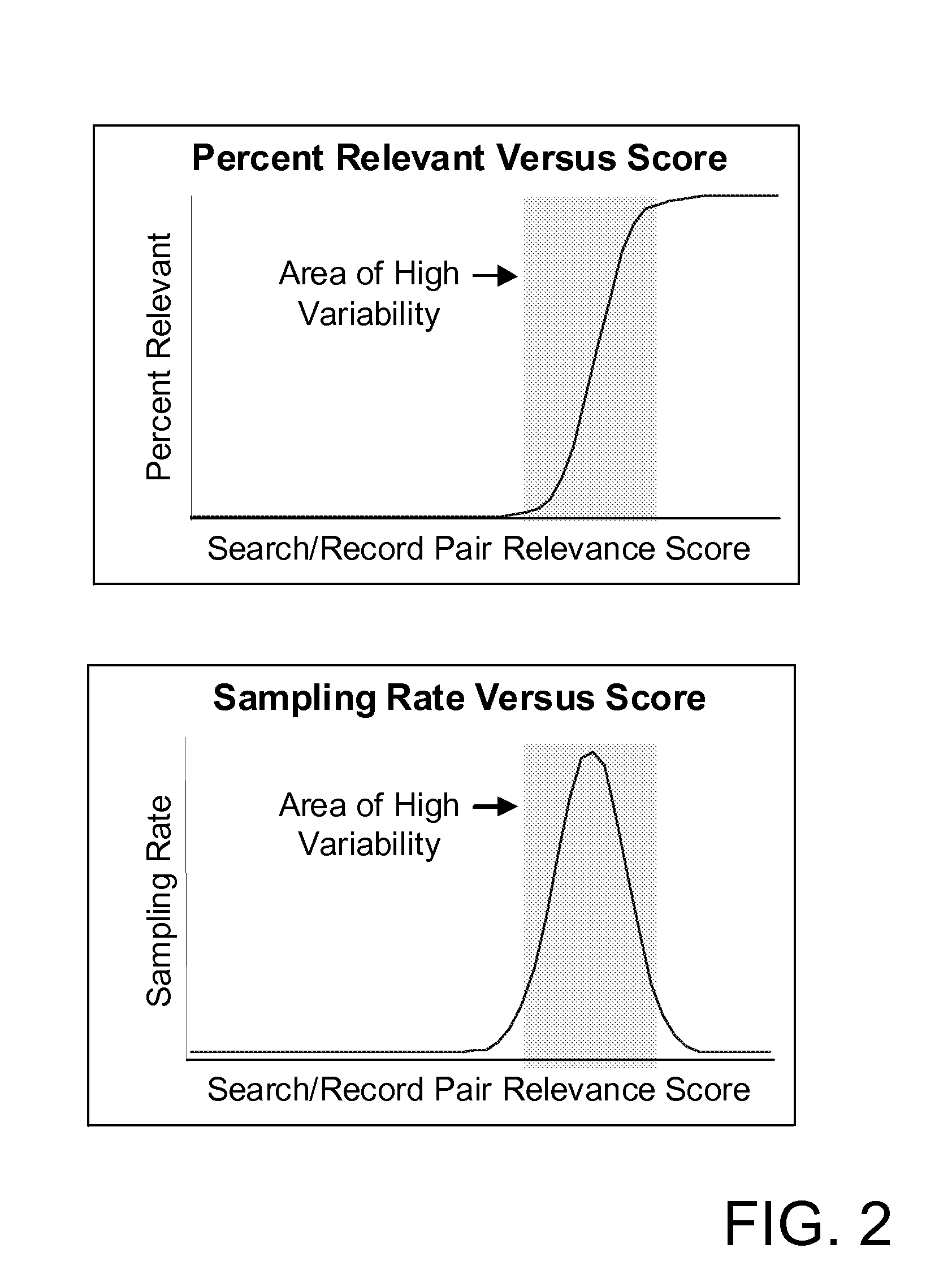Accuracy measurement of database search algorithms
a database and accuracy measurement technology, applied in the field of database search algorithm accuracy measurement, can solve the problems of large sample size, large cost, and inability to measure the accuracy of all search results of the entire database, and achieve the effect of increasing the probability of obtaining search/record pairs, high probability, and high variability
- Summary
- Abstract
- Description
- Claims
- Application Information
AI Technical Summary
Benefits of technology
Problems solved by technology
Method used
Image
Examples
Embodiment Construction
[0017]FIG. 1 depicts an illustrative embodiment of a computer system 10 that includes an algorithm evaluation system 18 for evaluating one or more search algorithms 32 by analyzing search data from a search history database 34. The result of the analysis is an evaluation output 36 (e.g., a printout, a user interface display, a report, an XML file, etc.) that provides an indication of the accuracy of one or more search algorithms 32. Algorithm evaluation system 18 may, for instance, be implemented as a computer program product stored on a computer readable medium, which when executed by processor 12, implements one or more features described herein.
[0018]Accuracy of each search algorithm 32 is measured using unequal probability sampling to randomly sample search data stored in the search history database 34. Search data can generally be represented as a matrix of: (1) search queries submitted, and (2) records that were searched, with each entry in the matrix being referred to herein ...
PUM
 Login to View More
Login to View More Abstract
Description
Claims
Application Information
 Login to View More
Login to View More - R&D
- Intellectual Property
- Life Sciences
- Materials
- Tech Scout
- Unparalleled Data Quality
- Higher Quality Content
- 60% Fewer Hallucinations
Browse by: Latest US Patents, China's latest patents, Technical Efficacy Thesaurus, Application Domain, Technology Topic, Popular Technical Reports.
© 2025 PatSnap. All rights reserved.Legal|Privacy policy|Modern Slavery Act Transparency Statement|Sitemap|About US| Contact US: help@patsnap.com



